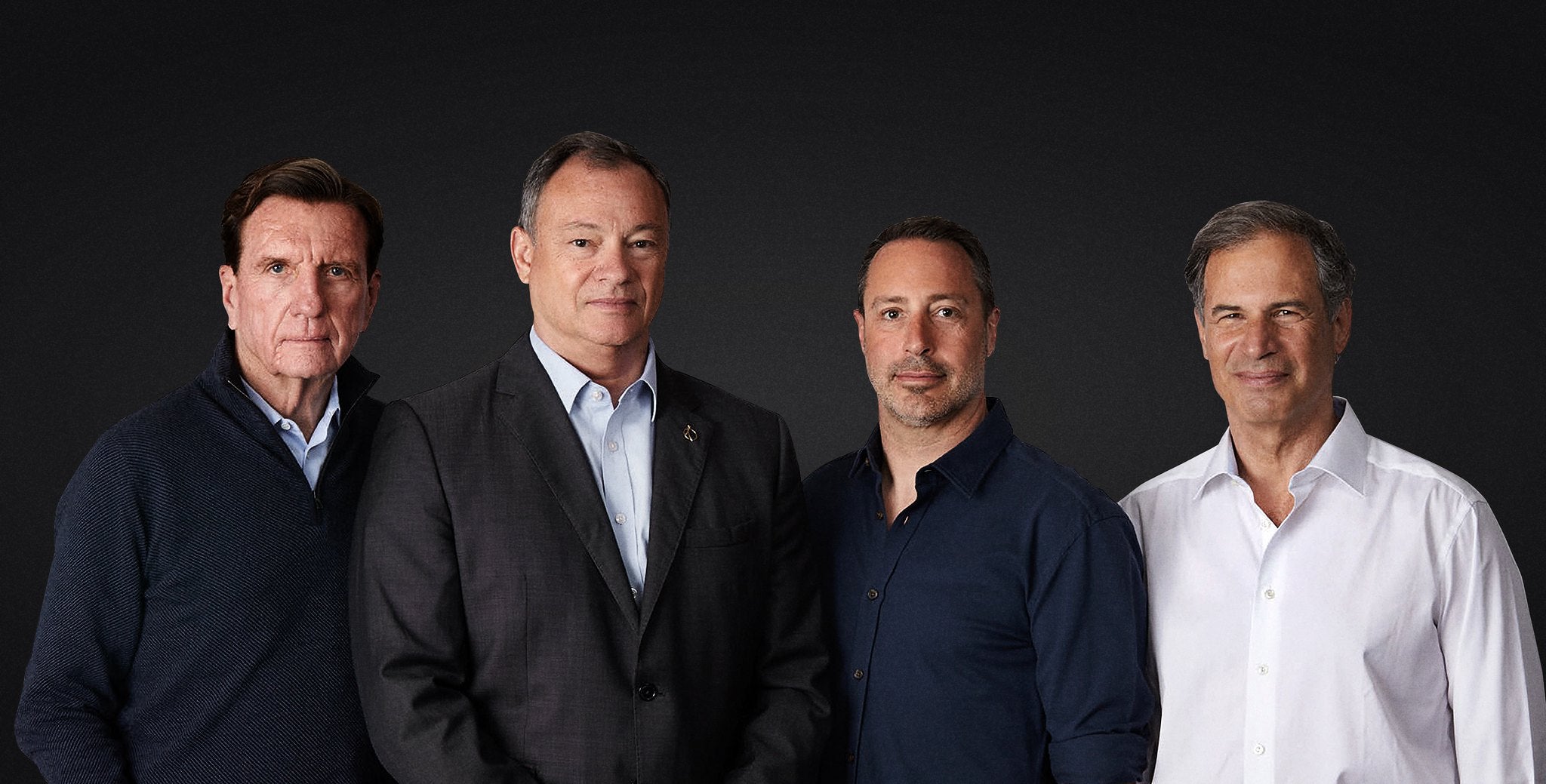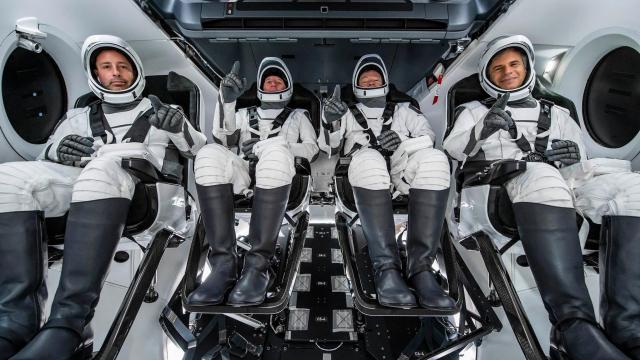This Friday, a SpaceX rocket will attempt to blast off from Kennedy Space Centre with four civilians on board. It’s the first wholly private mission to the ISS, in what’s poised to be a precedent-setting mission. Here’s what you need to know ahead of this historic launch.
The Ax-1 crew, which includes a retired NASA astronaut, will climb aboard a Crew Dragon capsule on April 8 and blast off at 11:17 a.m. EST atop a Falcon 9 rocket. Should all go as planned, the mission, managed by Houston-based Axiom Space, will serve as yet another important milestone in the ongoing privatization of space. Here are five things you should know about the Ax-1 mission.
It’s the first all-private mission to the ISS
Last year’s Inspiration4 mission will go down in history as being the first to send an all-private crew to space. Ax-1 is different in that the four crew members — all of whom are private citizens — will spend time aboard the International Space Station. That’s never been done before.
The closest thing, I suppose, was the Russian film crew that spent 12 days aboard the ISS last year to film scenes for a movie, but that mission, Soyuz MS-19, wasn’t exclusively private, as cosmonaut Anton Shkaplerov took part as the commander. The four men who will take part in this new mission are Michael López-Alegría from the U.S. and Spain, Larry Connor from the U.S., Eytan Stibbe of Israel, and Mark Pathy of Canada.
Axiom did not respond to a question about how much, if anything, the crew members paid for their seats. A 2019 press release from the company mentioned a price tag of $US55 ($76) million for private astronaut tickets.
Axiom is a small company with big plans
Axiom Space, founded in 2016, had around 110 employees in February 2021, but it’s been expanding and has plans to reach 1,000 workers by the end of 2024. The company has close ties with NASA; Michael Suffredini, former NASA ISS program manager, serves as the company’s CEO, and Charles Bolden, former NASA administrator, works as an independent consultant.
Axiom has a long list of potential offerings, including the training of astronauts, managing private and national flights to the ISS, offering on-orbit manufacturing capabilities, developing space-based life and medical support systems, among other services related to the exploration and commercialization of space. Importantly, the company has plans to build a private space station (more on this is just a bit), which it’s positioning as a future cornerstone of its overall offering.
Ax-1 is a boys trip
López-Alegría, a former NASA astronaut and Axiom vice president, will command Ax-1, while Connor, an entrepreneur and investor, will serve as the pilot. López-Alegría flew to space on four different occasions during his 20-year career at NASA, and he’s poised to become the first astronaut in history to lead both a civil and a commercial human spaceflight mission. Pathay and Stibbe, both investors, will serve as mission specialists.

All Ax-1 crewmembers are men, but former NASA astronaut Peggy Whitson is serving as the mission’s backup commander. And on that note, Whitson is currently slated to command the Ax-2 mission, scheduled for early 2023.
This is a ‘precursor’ mission
Axiom describes Ax-1 as a “precursor” private astronaut mission. It’s the first of four proposed missions, all of which are stepping stones for the company as it looks ahead to the construction of its private orbital outpost, dubbed Axiom Station. Construction of the station is scheduled to begin in 2024; a succession of modules will be incrementally added to the Harmony node of the ISS. Upon the retirement of ISS in 2030, the space station will detach from the outpost to “form the world’s first free-flying, privately developed, internationally available space station — the central node of a near-future network of research, manufacturing, and commerce in LEO,” according to Axiom.

The Ax-1 crew will spend 10 days in space, eight of which will be onboard the U.S. segment of the ISS. The crew will run scientific experiments, perform some commercial activities, and promote STEM education. The crew won’t have time to waste, as it plans on doing 25 different experiments in just 100 hours. A ground team stationed at Axiom Space Mission Control Centre in Houston will provide around-the-clock support.
The mission is meant to bring us closer to space
The crew has partnered with several institutions to perform a series of cientific and technological experiments and tests. Some of them carry important implications for humans living on Earth, but they’re primarily geared toward enabling further space exploration. As Axiom explained in a news release: “Data collected in-flight will impact understanding of human physiology on Earth and in orbit as well as establish the utility of novel technologies that could be used for future human spaceflight pursuits and humankind on Earth.”

A good example is the EEG-enabled helmet, which will be tested and operated by the Ax-1 crew. Working with Ben Gurion University, the team will record and analyse brain signals in an effort to spot potential neurological differences in humans while working in space. Ultimately, the goal is to provide future long-term space missions with an easy-to-use and comfortable helmet and to build an “accurate device for daily gauging for astronaut competence,” according to brain.space, the Israeli company behind the helmet.
The crew will also experiment with TESSERAE, or Tessellated Electromagnetic Space Structures for the Exploration of Reconfigurable, Adaptive Environments. This is futuristic stuff, as this tech could eventually result in self-assembling satellites. Named after Roman mosaics, modular TESSERAE are designed to connect to create larger structures, such as rooms and parabolic mirrors. During Ax-1, the team will test prototypes capable of sensing the quality of bonds between tiles.

Collaborations involving the Mayo Clinic, the Cleveland Clinic, and Montreal’s Children Hospital will study the effects of microgravity on ageing, heart health, spinal and brain tissue, chronic pain, and sleep disorders. The team will also “leverage the accelerated ageing aspects of the microgravity environment to evaluate early pre-cancer and cancer changes in tumour organoids,” and test a new air purification system, among other tasks.
It all gets started on Friday, weather permitting. It took a while, but we’ve fully entered an era in which private individuals — albeit very privileged private individuals — can fly to low Earth orbit and use space as their personal playground and a place to do business. Hopefully they’ll keep the rest of us in mind.
